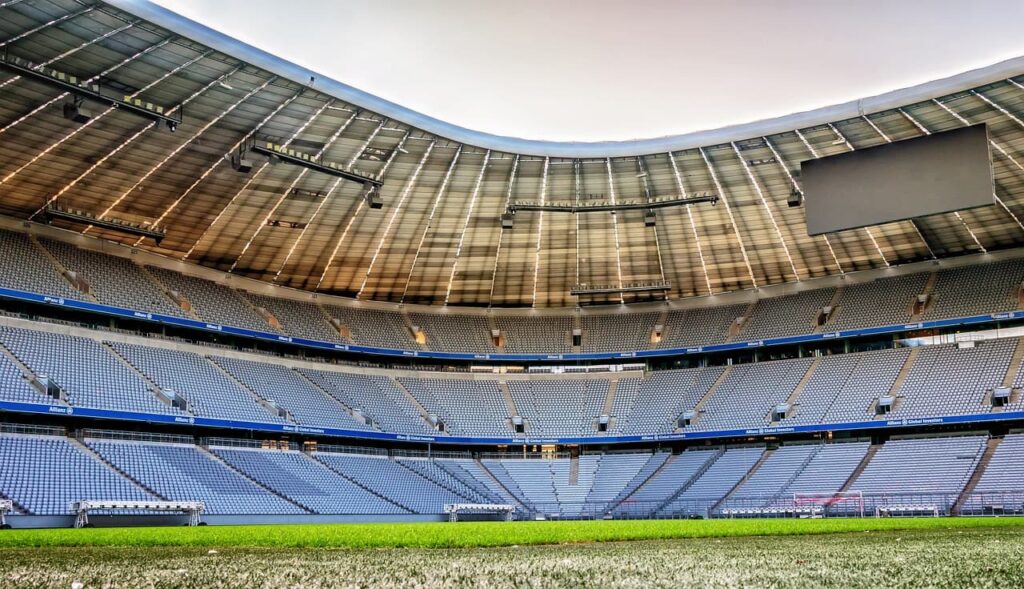Sports arenas not only serve as venues for spectacular matches and competitions, but they are also works of architectural art. From the ancient Roman Colosseum to today’s high-tech stadiums, each has unique features that make it recognisable around the world.
Ancient Symbol of Rome: Colosseum
The Colosseum is one of the most significant symbols of ancient Rome. Built in 80 AD, the amphitheatre was the venue for gladiatorial fights and mass spectacles. Capable of seating up to 50,000 spectators, it reflects the high level of ancient Roman engineering and architectural excellence. Today, the Colosseum attracts millions of tourists and is a symbol of the grandeur of the Roman Empire.
China’s Architectural Marvel: Bird’s Nest
Bird’s Nest, located in Beijing, is known for its unique structure resembling a bird’s nest. This stadium was the main venue for the 2008 Summer Olympics and is striking in its architectural complexity.
The stadium was designed by Herzog & de Meuron and can accommodate around 80,000 spectators. It is an example of the innovative use of steel and sustainable technology.
Pearl of Brazil: Maracanã
Maracanã, located in Rio de Janeiro, is famous for its history and importance to world football. This stadium has twice hosted World Cup finals and is one of the largest in the world with a capacity of over 78,000 spectators. Maracanã is not only a sports arena, but also an important cultural symbol of Brazil. It reflects the passion and love Brazilians have for football.
US Technological marvel: SoFi Stadium
SoFi Stadium in Los Angeles, opening in 2020, is the pinnacle of modern stadium architecture. Equipped with a giant LED screen and a folding roof, the stadium sets new standards for sports facilities.
It is used to host both sports matches and large-scale entertainment events. SoFi Stadium can accommodate up to 70,000 spectators and is characterised by high technology and functionality.
German Pride: Allianz Arena
The Allianz Arena, located in Munich, is known for its futuristic architecture and its ability to change the colour of its facade depending on the event taking place. The stadium, which is home to FC Bayern München, was opened in 2005 and can seat 75,000 spectators. With its unique appearance and cutting-edge technology, the Allianz Arena attracts the attention of not only football fans but also architectural critics. The arena is one of the most prominent symbols of modern architecture in Germany.

Hungarian Novelty: Puskás Aréna
Puskás Aréna in Budapest is one of the newest and most modern stadiums in Europe. Opened in 2019, it cost €533 million and is designed to host international football matches with a capacity of over 67,000 spectators.
The stadium is named after the famous Hungarian footballer Ferenc Puskás and serves as a new symbol of Hungarian national pride. Puskás Aréna is also recognised for its environmental standards and modern amenities.
Mexican Beauty: Estadio BBVA
Estadio BBVA, located in Monterrey, opened in 2015 and is the fourth largest stadium in Mexico with a capacity of 51,000. The stadium cost $200 million to build, making it the most expensive at the time of its creation.
Estadio BBVA is known for its spectacular view and is a key landmark in the region. The stadium is used for football matches and major events, becoming a symbol of Mexico’s sporting achievements.
Miracle of Qatar: Lusail Stadium
Lusail Stadium, located in Lusail, Qatar, was designed by the architectural firm Foster + Partners and is one of the most innovative stadiums in the world. The stadium seats 88,000 spectators and was one of the key venues for the FIFA 2022 World Cup.
Its design is inspired by traditional Arabian motifs, while the use of advanced technology and sustainable materials allows for a significant reduction in energy consumption. Lusail Stadium has been praised for its sustainability and has set an example for future sports facilities.
Summary
Each of the stadiums reviewed not only serves as arenas for sporting events, but also as embodiments of architectural excellence and cultural significance.
From the ancient Colosseum to the modern Lusail Stadium, these facilities combine history, innovation and design. They reflect the spirit of their times and geographical regions, becoming symbols of national pride and engineering progress.
A visit to these stadiums offers not only the opportunity to watch sporting events, but also to experience a sense of belonging to the history and culture of a place. Iconic stadiums thus remain an important part of the world’s cultural and sporting heritage.